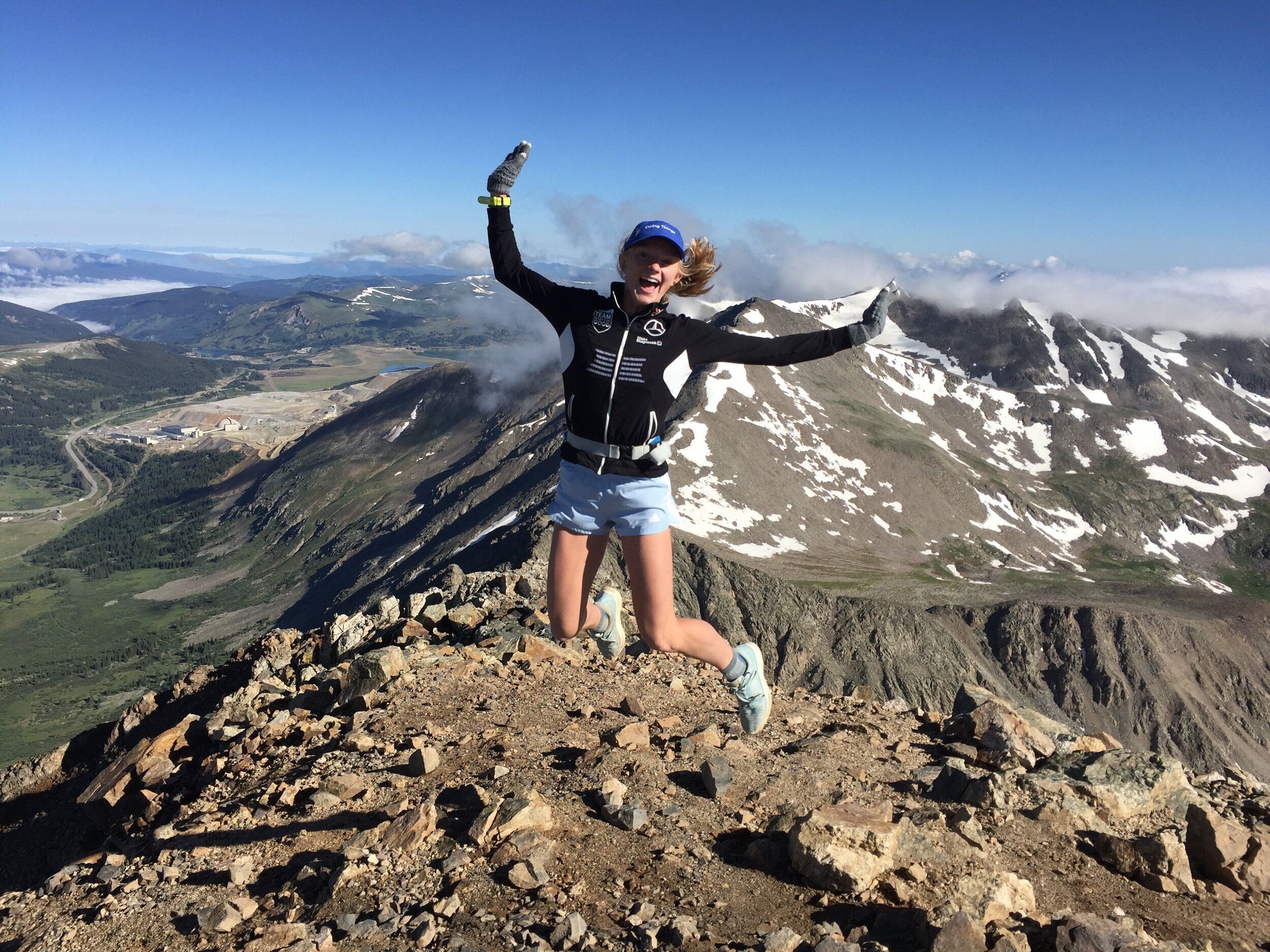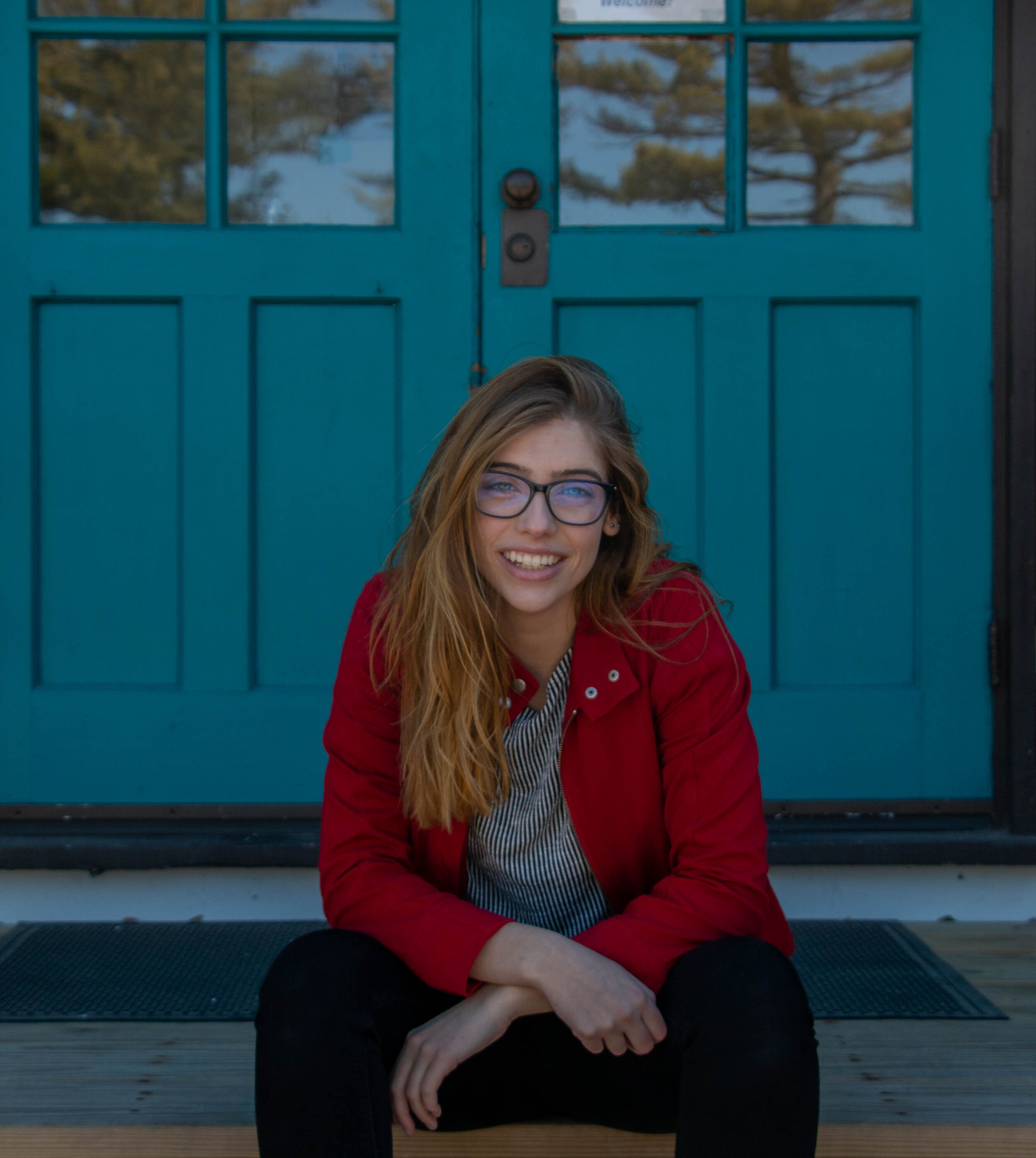Introducing Our 2021 CanBee Cocktails Grant Winners: Kaitlyn Barthell and Hunter Benkoski
Did you know that CanBee Cocktails is committed to funding a grant program to assist in further increasing the available pollinator research in the United States? We are so excited to announce our two 2021 winners! Introducing Kaitlyn Barthell and Hunter Benkoski: pollinator conservation extraordinaires. We’re giving you an inside look at their research - and don’t worry, we made sure to ask about their favorite cocktails, too!
Kaitlyn Barthell (Left) and Hunter Benkoski (Right) | Photos courtesy of Kaitlyn and Hunter
Hi guys, thanks for chatting with us today! Can you tell us a little about yourselves? Our readers would love to learn a bit more about both of you.
Kaitlyn: Hey! My name is Kaitlyn Barthell. I am in my fourth year of the bachelor's-accelerated master's program in the ecology and evolutionary biology department at CU Boulder. Other than studying ecology, I am a Division I cross country and track athlete at the University of Colorado. I specialize in the 5000m and 10000m. I also love cooking and gardening!
Hunter: And my name is Hunter Benkoski. I’m currently a first-year graduate student at Western Colorado University in their M.S. in ecology program. My undergrad degrees are in environmental studies and sustainability. I also have a minor in dance! I haven’t been able to go to in-person dance classes in a while because of the pandemic, so I’ve been doing yoga and going for lots of walks to stay active.
Ecological studies, track, yoga, gardening – you guys are busy! Can you give us a quick synopsis of what you’ll be studying for the CanBee Cocktails Grant Program this year?
Kaitlyn: Bumblebees are declining globally due to human-caused habitat/forage loss, disease, invasive species, pesticides and climate change. I’m studying how climate change is affecting bumblebee niche partitioning, which allows for the simultaneous coexistence of several species of bumblebees.
Hunter: I am studying the differences between bee communities that visit human-planted gardens and nearby natural areas. I’m collecting all my data in a small town in West Virginia, and specifically I’m wondering if there’s a difference in the timing of when bees are visiting those different areas.
We can’t wait to learn more about your findings. How did you guys get into researching bees? Why did this area of research interest you?
Kaitlyn: I first became interested in researching bees as an undergraduate when I joined the CU Bee Club and got a summer job selling honey at the Boulder Farmer's Market (Highland Honey). Through these two experiences, I fell in love with learning about bees and discussing bee conservation with concerned citizens. I also discovered how delicious local, unprocessed honey is!
Hunter: I started researching bees for an undergraduate project, and I’ve spent the past two summers working as a research assistant on pollinator projects at the Rocky Mountain Biological Laboratory (RMBL). I got really interested in bee research when I read that honey bees are not native to North America!
Let’s get serious for a minute. A lot of people want to save the bees, but companies and consumers find there's a lot of misinformation out there about what that means. What does 'save the bees' mean to you, as scientists?
Kaitlyn: As a scientist, 'save the bees' means mitigating the effects that climate change, disease, pesticides, invasive species and habitat loss has on our bee populations. It means preserving bee biodiversity and habitat through meaningful action.
Hunter: There’s a lot of well-meaning “save the bees” talk all over mainstream media, but there’s this huge misconception in public opinion that “save the bees” means “save the honey bees.” The whole conservation picture is a lot more complicated than that! Honey bees are not native to North America, and they are only one species out of about 4,000 that are around here. To me, “save the bees” should be about preserving the diversity of North American bees. This means taking a holistic approach to conservation to address the complex threats to all kinds of bees: overuse of insecticides and herbicides, habitat loss and degradation, climate change, pathogen spread from commercially managed bees, etc.
What's one small thing you think we all could change to help bees?
Kaitlyn: Habitat and forage loss is one of the major contributing factors to bee loss. To combat this, people can plant native flowers (and flowering trees) in their lawns and support organic, polyculture farms.
Hunter: We can all choose to eat more organic and/or local foods to help bees. Organic foods have more rigorous pesticide standards in terms of what can be applied, but they can be pricey! If buying organic isn’t feasible, people can also choose to buy from local farmers. This reduces the carbon footprint of your food and supports local economies, and it’s likely that your local farmers are using less pesticides than large-scale commercial farms!
Those are great tips for our readers! Thanks for sharing. Hunter, we’ve got a few questions just for you.
What do we already know about how human landscape changes, like urban areas or farmland, impact bees?
Hunter: This is a big question! Bees need a few basic things to survive like flowers for food, water and somewhere to nest. Depending on how farmlands and urban areas are designed, they do better or worse at fulfilling those needs. Generally, densely developed urban areas and intense monocrop farmlands are pretty awful bee habitats. There is a growing movement of conservationists, scientists and community members that want to make these types of habitats more bee-friendly, however! The best way to do this is to make sure those basic bee needs are met. In farmland, that can include allowing more crop diversity and field buffers with wildflowers and limited use of chemicals. In urban areas, that can include having more green spaces designed for bees and other wildlife.
You’re planning to involve the local public in your research. Are there other ways for members of the public to get involved studying or helping bees?
Hunter: There are several awesome citizen science projects designed for members of the public to get involved with studying them. One of my personal favorites is Bumble Bee Watch from the Xerces Society. It’s an app/website where you can take photos when you see a bumble bee, try to identify what species it is, then have an expert verify your ID. The Xerces Society website (xerces.org) has lots of other resources that members of the public can access to contribute to bee conservation efforts.
Kaitlyn – we’ve got some questions just for you, too! What do we know already about how climate change might impact bees and plants?
Kaitlyn: Climate change impacts bees and plants in several ways. One impact is phenological mismatch, which is a phenomenon that arises from early snowmelt and warming temperatures. This can lead to flowers and their associated pollinators becoming asynchronous in time, which disrupts the success of both parties. Increased temperatures can also lead to local extinctions of plants and insects that are not adapted to these new conditions, forcing many species to alter their distributions.
How might your research help us to help bumblebees in Colorado, and the other 20,000+ species of bees globally?
Kaitlyn: Through studying bumblebee niche partitioning, we can help predict how plant-pollinator communities as a whole will respond to climate change. Ecological communities act like a "superorganism" in a way. Studying one piece of the puzzle (bumblebee response) can give us a better idea of how the puzzle as a whole (entire plant-pollinator community) will react to climate change. Our findings in Pikes Peak go beyond the Front Range of Colorado. Globally, our findings can be used to understand and predict plant-pollinator community response to climate change.
Pollinator research and pollinator conservation is extremely important—but we can still have some fun! If you guys had to be a bee, what species would you pick?
Kaitlyn: This is such a tough question! If I had to be a bee, I would want to be in the genus Anthophora. They are stunningly beautiful. Some species have bright green compound eyes! Like bumblebees, they are capable of buzz pollination and have very fuzzy bodies. This makes them great pollinators of both crop plants and wildflowers.
Hunter: I’m personally a huge fan of bumble bees, and I think I’d be happy as any bumble bee species (there are 49 species in the United States). Bumble bees are awesome because they can regulate their temperature by shivering. This makes them able to fly around in colder temperatures than most other bees can!
Great answers. What's your most impressive bee fact?
Kaitlyn: Unlike humans, bees can see ultraviolet radiation. UV markings on flowers can aid bees in finding and landing on flowers!
Hunter: Most bees (about 75% of them) are solitary and make their little nests in the ground by digging a hole in exposed soil. They don’t live with any other bees, and they prefer not to have any neighbors nearby!
Thank you both again for sitting down with us! Let’s end with our favorite question here at CanBee Cocktails: What are your favorite summer cocktails or summer outdoor activities?
Hunter: I love doing anything and everything outside during the summer! Catching bees for my research, lounging by the pool, going for hikes, late-night campfires- all of it!
Kaitlyn: My favorite summer cocktails include anything with citrus in it! Mojitos, margaritas, Moscow mules and mimosas are a few of my favorites. I am excited to get my hands on some CanBee Cocktails, they sound like a citrusy delight!
If you’re like Kaitlyn and need to get your hands on some Bee’s Knees, you’re in luck! Sign up for our email list and get $15 off your next order.



